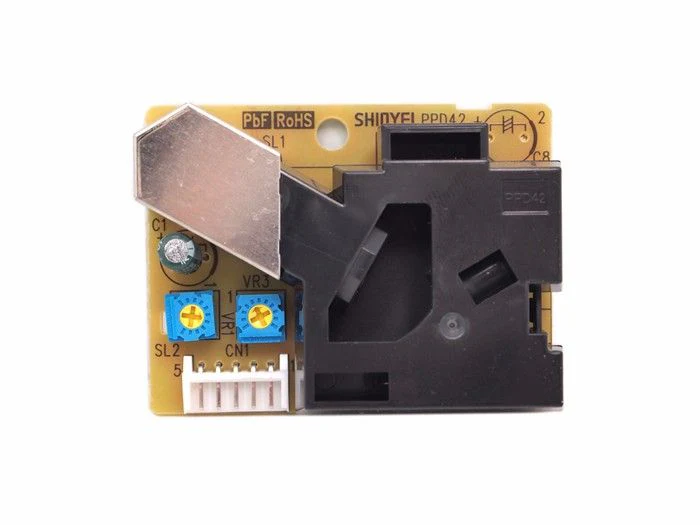
Overview
Provide reliable data for air purifier system Easy maintenance PWM output Grove compatible interface Compact and light design.
This Dust Sensor gives a good indication of the air quality in an environment by measuring the dust concentration. The Particulate Matter level (PM level) in the air is measured by counting the Low Pulse Occupancy time (LPO time) in a given time unit. LPO time is proportional to PM concentration. This sensor can provide reliable data for air purifier systems; it is responsive to PM of diameter 1μm.
Note:
This sensor uses a counting method to measure dust concentration, not weighing method, and the unit is pcs/L or pcs/0.01cf.
Please pay attention to the warnings listed here.
Features:
- Grove compatible interface(extra wire with connector)
- Supply voltage range: 5V
- Minimum detect particle: 1um
- PWM output
- Dimensions: 59(W)x45(H)x22(D) [mm]
Application Ideas:
- Air Purifier
- Air Quality Monitor
- Air Conditioner
- Ventilator
Get Inspired
Print a claw on your 3D printer and use a myoelectric sensor to control it.

"But can it run Doom?" is more than just a joke in the tech world. It is also a decent litmus test for the computing power of hardware. That test isn't very relevant for modern computers, but it is still worth asking when discussing microcontrollers. Microcontrollers vary in dramatically in processing power and memory, with models to suit every application. But if you have an Arduino Nano ESP32 board, you can run Doom as Naveen Kumar has proven. The Nano ESP32 is a small IoT development board for the ESP32-S3 microcontroller, featuring Wi-Fi® and Bluetooth® connectivity. It also has a relatively high clock speed and quite a lot of memory: 240MHz and 512kB SRAM, respectively. That still isn't enough to meet the requirements of the original Doom release, which needed a lot more RAM. But Kumar demonstrates the use of an MCU-friendly port that runs well on this more limited hardware. Want to give it a try yourself? You'll need the Nano ESP32, an Adafruit 2.8" TFT LCD shield, an M5Stack joystick, a Seeed Studio Grove dual button module, a breadboard, and some jumper wires to create a simple handheld console. You'll have to compile and flash the Retro-Go firmware, which was designed specifically for running games like Doom on ESP32-based devices. You can then load the specialized WAD (Where's All the Data) files. Kumar reports an average frame rate at a 320×240 resolution, which is very playable.









